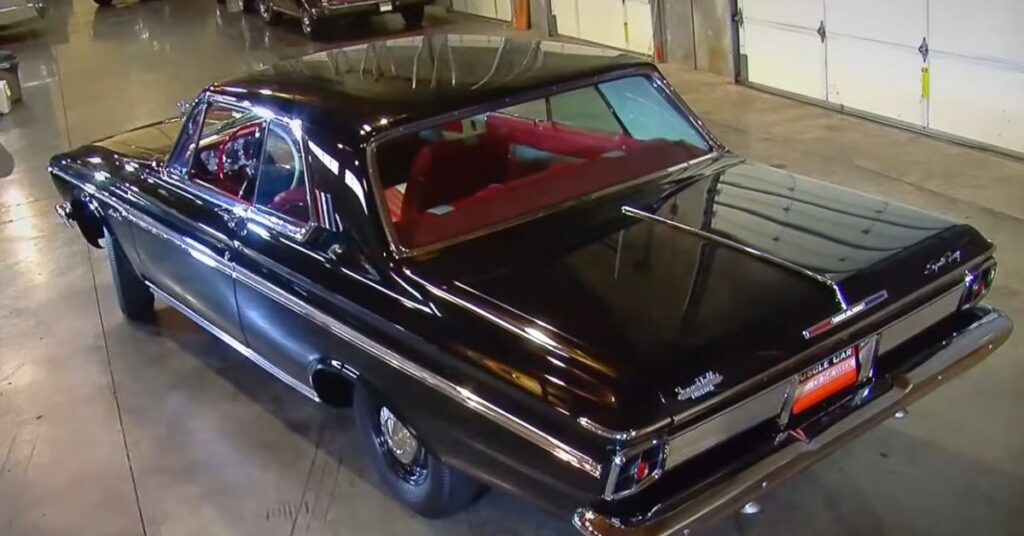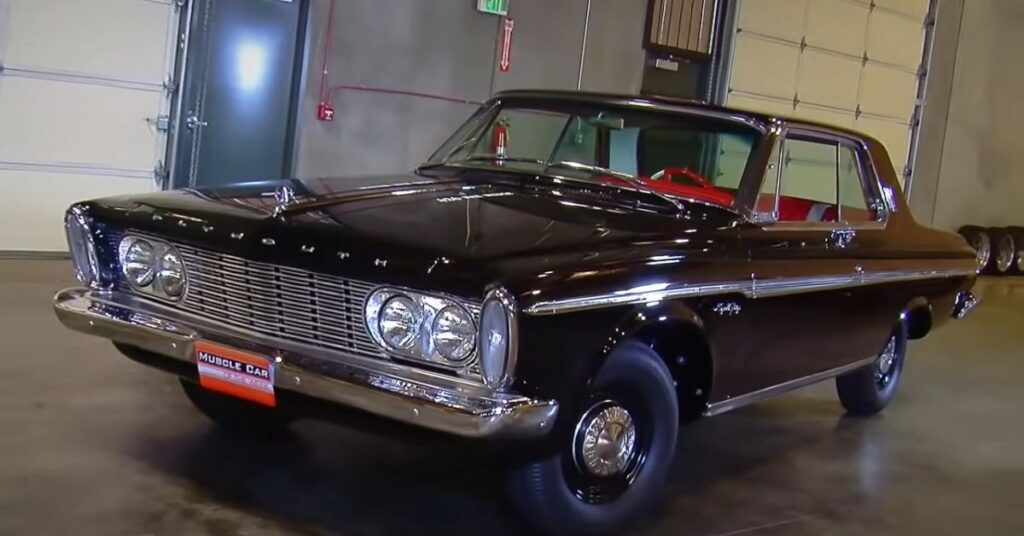The 1963 Plymouth Sport Fury 426 Max Wedge is a legendary muscle car known for its raw power and iconic design. In this episode of Muscle Car of the Week, we delve into the details of this Super Stock race car and explore its performance features. Let’s take a closer look at the 1963 Plymouth Sport Fury and why it remains a classic in the world of muscle cars.
The Styling of the 1963 Plymouth Sport Fury
The 1963 Plymouth Sport Fury showcased a more conservative design compared to its predecessors. As the ’60s unfolded, Plymouth aimed for a crisp and clean image with this car. The exterior featured a slab-sided body with minimal sweeping trims, giving it a clean and streamlined appearance. Although lacking extravagant styling elements, the 1963 Sport Fury still exuded a sense of elegance with its long and sleek profile.

The Interior of the 1963 Plymouth Sport Fury
Stepping inside, you were greeted by spacious and plush seating covered in premium vinyl upholstery. The seats were ergonomically designed to provide excellent support and comfort, making long drives a pleasurable experience. The front seats featured bucket-style contours, embracing the driver and passenger snugly.

The dashboard of the 1963 Plymouth Sport Fury was a work of art. It boasted a sleek and futuristic design with chrome accents and a symmetrical layout. The instrument cluster featured large, easy-to-read gauges, providing vital information at a glance. The center console housed an array of controls, including the radio and climate settings, all within convenient reach of the driver.

One of the standout features of the Sport Fury’s interior was its attention to detail. The door panels were adorned with chrome trim and soft-touch materials, adding a touch of elegance to the overall ambiance. The steering wheel, wrapped in supple leather, felt luxurious to the touch and featured a sporty design that complemented the car’s performance-oriented nature.
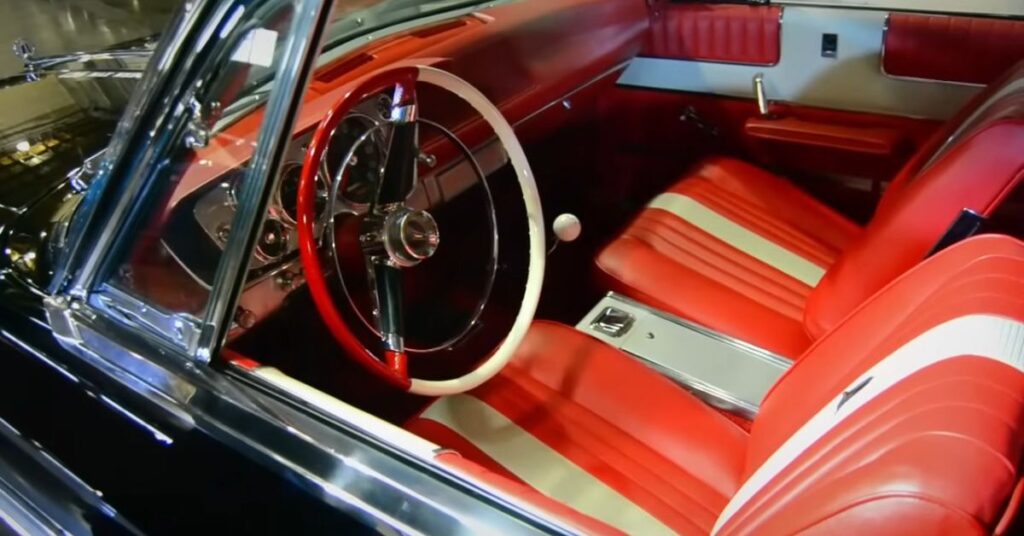
To enhance the driving experience, the 1963 Plymouth Sport Fury offered an array of optional extras. These included power windows, power-adjustable seats, and air conditioning, which were considered premium features at the time. The car also had ample storage space, with a roomy trunk that could accommodate luggage for long trips.
The Superstock 426 Max Wedge Engine
The Superstock 426 Max Wedge engine was a true powerhouse of its time, representing the pinnacle of performance and engineering in the automotive world. Introduced by Chrysler in the early 1960s, it was specifically designed for drag racing and quickly gained a reputation for its raw power and exceptional performance on the track.
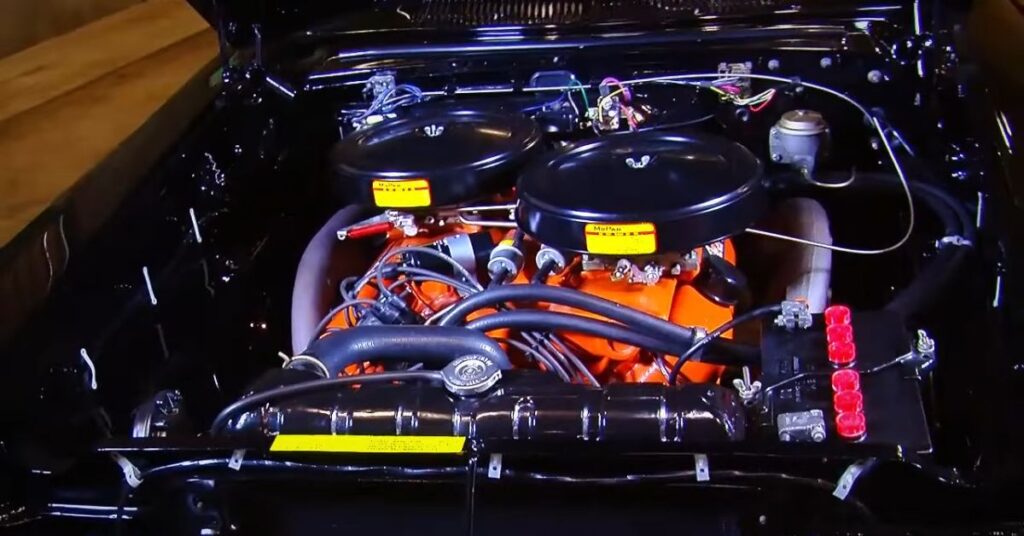
At the heart of the Superstock 426 Max Wedge engine was its massive displacement of 426 cubic inches (7.0 liters). This V8 engine featured a unique wedge-shaped combustion chamber design, which allowed for efficient airflow and improved power output. The engine’s large bore and stroke dimensions contributed to its impressive torque and horsepower ratings.

Equipped with dual four-barrel carburetors and high-flow intake and exhaust systems, the Superstock 426 Max Wedge engine delivered astonishing levels of performance. It produced a whopping 425 horsepower, making it one of the most potent engines of its time. The engine’s brute force was complemented by its distinctive roar, as the powerful exhaust note echoed through the racetracks.
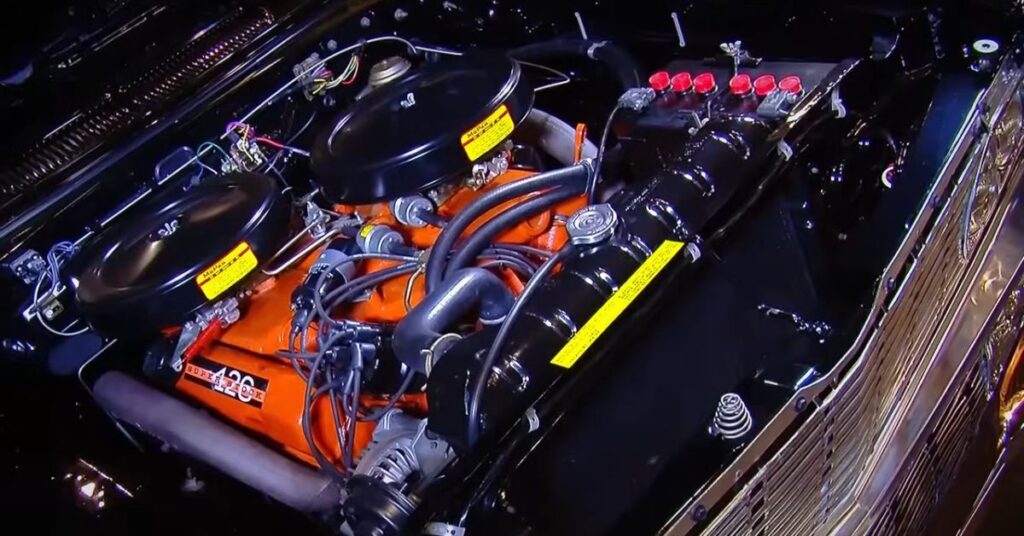
To handle the immense power, the Superstock 426 Max Wedge engine was built with reinforced components. It featured a forged steel crankshaft, high-performance camshaft, and heavy-duty connecting rods. The cylinder heads were specially designed with large intake and exhaust ports, optimizing airflow for maximum power delivery.
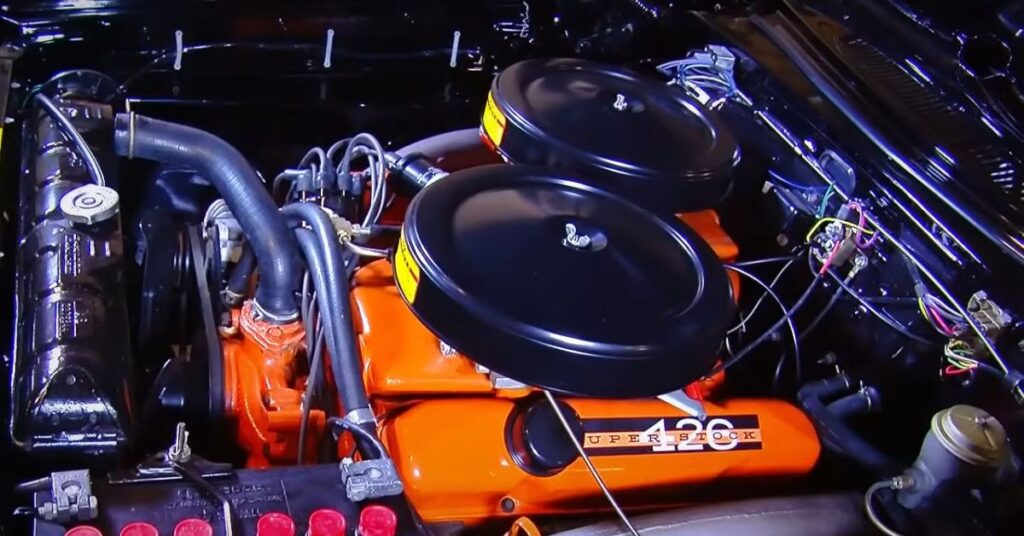
The Superstock 426 Max Wedge engine found tremendous success on the drag strips. It dominated its competition, propelling Chrysler cars to victory after victory. With its incredible acceleration and blistering quarter-mile times, it quickly became a force to be reckoned with in the world of drag racing. Beyond its racing prowess, the Superstock 426 Max Wedge engine also found its way into some high-performance road cars, such as the Dodge Coronet and Plymouth Belvedere. These street versions retained much of the engine’s racing DNA, providing enthusiasts with an exhilarating driving experience on the open road.
Performance and Racing Legacy
The 1963 Plymouth Sport Fury with the Superstock 426 Max Wedge engine delivered impressive performance figures. With its 415 horsepower and 465 foot-pounds of torque, this lightweight car was capable of low 12-second quarter-mile runs. Notably, well-known drag racer Tom Grove set records with a previous 1962 version of this car and achieved a remarkable 11.99-second run with the 1963 model. Despite its modest seven and a half inch wheels and 14-inch tires, the Sport Fury proved itself as a true powerhouse on the track.
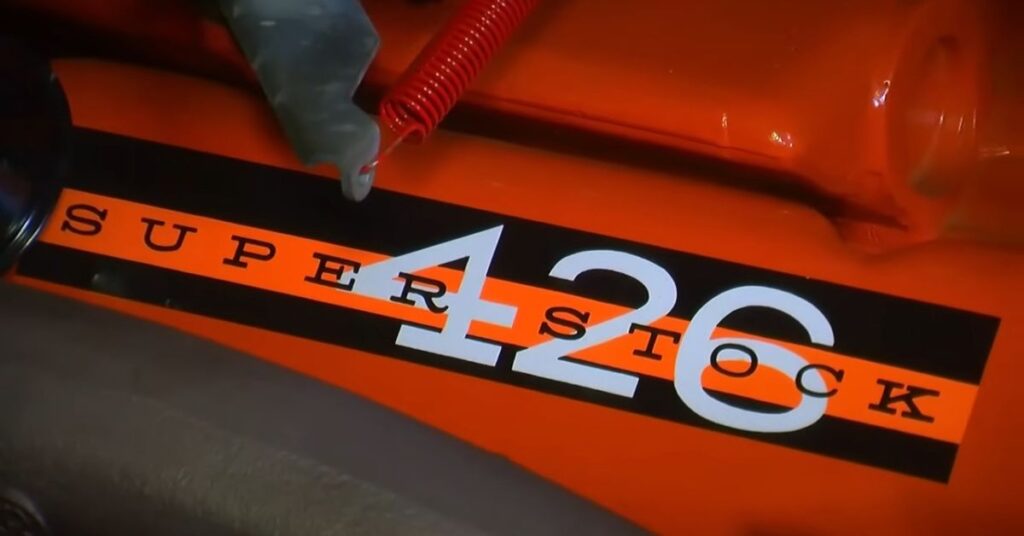
The Sport Fury’s engine was complemented by unique features that enhanced its performance. The short RAM intake, despite its significant size, was designed to reduce weight and improve air intake velocity into the Max Wedge cylinder heads. The intake housed two Carter four-barrel carburetors, optimizing fuel delivery to the engine. The exhaust manifolds followed a free-flowing design, with three-inch pipes that eventually narrowed down to two inches. This efficient exhaust system ensured the engine could breathe freely at high RPMs, maximizing its power output.

Braking System and Street Performance
While the 1963 Plymouth Sport Fury excelled on the drag strip, its braking system was more suited for quarter-mile runs than street driving. Equipped with four-wheel drum brakes and a single-pot master cylinder, the car’s braking performance became unpredictable when heated. This characteristic made the Sport Fury more challenging to control during regular street use. Nevertheless, the car’s true nature revealed itself when unleashed on the drag strip, where its power and speed dominated the competition.

Conclusion
The 1963 Plymouth Sport Fury 426 Max Wedge is a testament to the raw power and simplicity of classic muscle cars. Its iconic design, paired with the Superstock 426 Max Wedge engine, created a fearsome combination that dominated the drag strip. From its basic yet stylish exterior to its no-frills interior, the Sport Fury embodies the essence of a purpose-built racing machine. Whether considered the first muscle car or not, there’s no denying the significant impact the 1963 Sport Fury had on the automotive industry.
